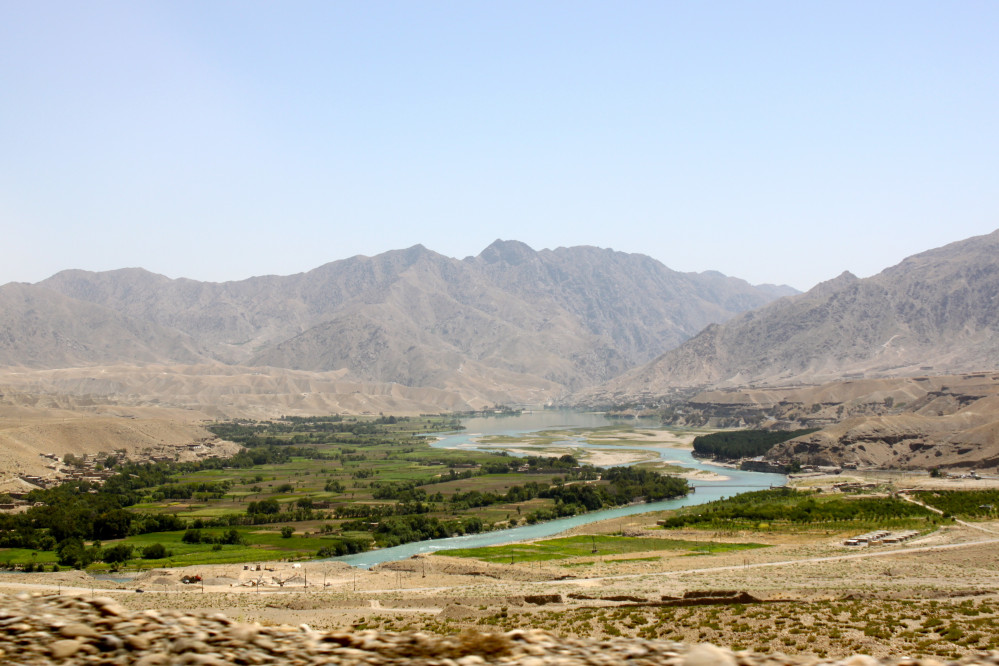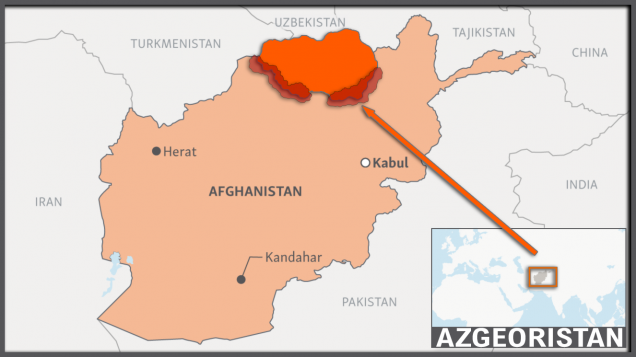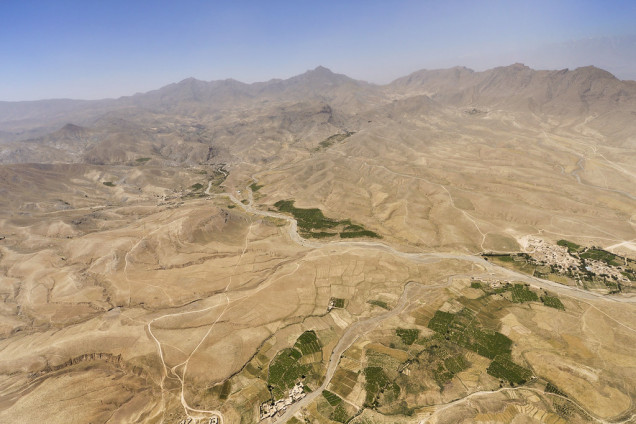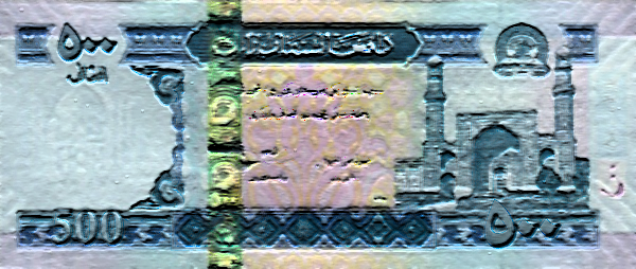
Imagination Nation
Azgeoristan (Imagi-nation)
Please understand that Azgeoristan is a completely fictitious country the information that is presented is in the format borrowed from the CIA World Factbook, this country information is based specifically the entries in the factbook for Tajikistan, Turkmenistan and Uzbekistan.
 Azgeoristan, a small country on the border of Tajikistan, Turkmenistan, Afganistan and Uzbekistan. The red areas on the map are the contested areas under the control of the warlords or smugglers.
Azgeoristan, a small country on the border of Tajikistan, Turkmenistan, Afganistan and Uzbekistan. The red areas on the map are the contested areas under the control of the warlords or smugglers.Background
Since gaining independence from the Russian, Azgeoristan has been seen as its independent sovereign nation when the Soviet Union disintegrated in the early 1990s. Azgeoristan has been led by Armin Umarov, first as Chairman of the Assembly and then as President-Elect. At the time of it gaining independence effective government control of the nation was lost as a brutal civil war began immediately and lasted from 1992 to 1999 with unrest within the nation still happening today.
Some parts of the nation are not under the government’s full control, the Azgeoristan/Afghanistan border is in the control of the warlords and smugglers. It was only in 2014 that the Russian military finally withdraws the last of its troops at the request of the government, as it was seen as a way to help in having an open and free election which had not happened in some time.
Azgeoristan was one of the nations that received some economic assistance from the international community follow the assistance that was received by Afghanistan, this is due to Azgeoristan geographic proximity to that country; due to the last elections and a large anti-western faction within the countries Assembly of Representatives; the government has remained neutral when it comes to the conflicts in the region.
Azgeoristan is in the early stages of seeking World Trade Organization (WTO) membership and has joined NATO’s Partnership for Peace.
Geography
Location: Central Asia, west of Tajikistan, south and east of Uzbekistan, north of Afghanistan.
Area: 139,639 km²
Land boundaries: border countries: Afghanistan, Tajikistan, Uzbekistan
Coastline: 0 km (landlocked)
Climate: mid-latitude continental, hot summers, mild winters; semiarid to polar in the Roshan and Babak Mountains
Terrain: Roshan and Babak Mountains dominate the landscape; western Ardavan Valley in north, Azerm Valley in southwest
Natural Resources: hydropower, some petroleum, silver, gold, uranium, and tungsten
Land Use: arable land: 9%; permanent crops: 3%; other: 88%
Natural Hazards: earthquakes and floods
People
Population: 5.822 million (July 2016 EST.)
Nationality: noun: Azgeoristani(s); adjective: Azgeoristani
Ethnic groups: Tajik 52%, Uzbek 38%, Russian 3% (declining because of
Emigration), other/unknown 7%
Religions: Sunni Muslim 85%, Shi’a Muslim 5%
Languages: Tajik (official), Russian widely used in government and business and some English
Government
Country Name: Conventional long form, Republic of Azgeoristan; conventional short form: Azgeoristan; local short form: Azgeoristan; former: Azgeori Soviet Socialist Republic
Government type: Republic
Capital: Tarasik (Under Russian Rule), Toktam (Renamed after its independence)
Administrative divisions: 2 provinces and 1 autonomous province
Independence: 18 September 1991 (from the Soviet Union)
National holiday: Independence Day (or National Day), 18 September (1991)
Consitution: 1 January 1999
Legal system: based on civil law system; no judicial review of legislative acts
Suffrage: 18 years of age; universal
Executive branch: Head of State: President Armin Umarov (President since 12 April 1998; Supreme Assembly Chairman since 18 September 1992) Head of Government: Prime Minister Kaiyan Azada (since 23 April 2001)
Cabinet: Council of Ministers appointed by the president, approved by the Government Assembly
Election results: Armin Umarov elected president; the percentage of the vote – Armin Umarov 96%
Elections: President elected by popular vote for a seven-year term; election last held 12 April 1998; the prime minister appointed by the president; Azgeoristan held a constitutional referendum on 1 January 1998, among other things, ratified the constitution which created the offices of President and Prime Minister and defined the structure of the legislature
Legislative Branch: Bicameral Supreme Assembly or Kanishka Oli consists of the Representatives (lower chamber) or Kavah Namoyandagon (52 seats; members are elected by popular vote to serve five-year terms) and the National Assembly (upper chamber) or Kavah Milliy (25 seats; members are indirectly elected, 15 selected by local deputies, 10 appointed by the president; all serve five-year terms)
Judicial branch: Supreme Court (judges are appointed by the president)
Economy
Economy – overview: Azgeoristan has the second-lowest per capita GDP among the Former Soviet
Republics. Arable land is limited to between 10% and 13%. The most valuable crop is cotton, though much
of the arable land is given over to subsistence farming. The nation has various mineral resources are limited quantity, the most valuable minerals now being mined include silver, gold, uranium, and tungsten. Hydropower facilities are important for the Azgeoristan economy. The industrial infrastructure suffered greatly during the civil war (1992 – 1999) and Azgeoristan carries a large foreign debt. An agreement was reached with Russia to restructure Azgeoristan’s debt burden in 2002.
Export Commodities: aluminium, electricity, cotton, fruits, vegetable oil, textiles
Import Commodities: electricity, petroleum products, aluminium oxide, machinery and equipment, foodstuffs
Currency: Dinar
Currency Code: ADA
Exchange rates: Azgeoristan dinars per US dollar – 2,500 (2004), 2,500 (2003), 2,500 (2002), 2,500 (2001),
2,500 (2000); please note – The official exchange rate has not varied since 1999, though the black market rate has 47 fluctuated between 12,000 and 25,000 dinars to the dollar; Albenistan dinars are not officially available outside of Albenistan
Transnational Issues
Disputes: prolonged regional drought creates water-sharing difficulties in the valley region along the border with Afghanistan; talks have begun with Uzbekistan to de-mine and delimit border; disputes in the Valley delay completion of delimitation with Tajikistan.

































![TerrainFest 2024! Build Terrain With OnTableTop & Win A £300 Prize [Extended!]](https://images.beastsofwar.com/2024/10/TerrainFEST-2024-Social-Media-Post-Square-225-127.jpg)











































Love this idea, really inspiring. I might crack out books on the drugs wars of the 80s/90s and do something similar.
Don’t know if you’ve seen that the BFBS now has a youtube channel but they put up a doc about the British/NATO forces in Afghanistan recently. https://www.youtube.com/watch?v=mlm7zMqLoNM